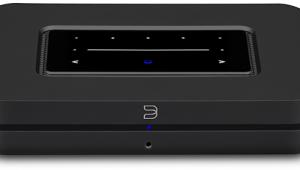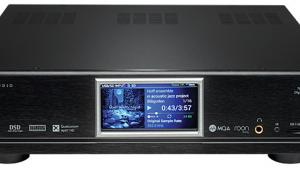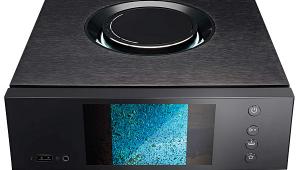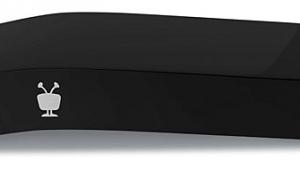Zappiti 4K HDR Media System Review

AT A GLANCE
Plus
Easy setup and installation
Sleek, attractive user interface
Scalable—can add other rooms as needed
Minus
Does not retain HDR metadata
No Dolby Vision or HDR10+ Support
Requires wired network for best results
THE VERDICT
An easy to use digital ecosystem with a sleek interface that lets you rip your entire music and movie disc library and access it from any room in the house.
With today's streamers and smart TVs offering myriad apps to watch movies from, one thing has become painfully obvious about discs: they're clunky. While I'm a firm believer in pre-recorded media due to its superior technical merits, I'll admit that shelves overflowing with discs can get overwhelming. Also, let's face it: case spines aren't nearly as sexy as a slick onscreen interface. From early Windows Media solutions to the latest apps like Kodi, I've seen numerous solutions crop up over the last decade to bring pre-recorded media to a modern playback environment. But there hasn't been a simple consumer-friendly offering that lets the general user migrate an existing content collection to a digital media library with a stylized interface. The closest option I've seen is Kaleidescape, but the hardware for that system can be cost-prohibitive, and the company's latest offering is a disc-free solution that requires repurchasing your movie library through its online store.
I recently learned about Zappiti, a relatively new company to these shores (they've been in Europe for quite some time now) with a compelling digital media library and hardware solution featuring multiple options for an average user to choose from. Zappiti offers an array of "players" that can access your media directly from either onboard or attached storage, or from network-attached storage (NAS), and the company's graphic interface is akin to what you see with streaming media solutions like Netflix, Apple TV, and even Kaleidescape. For this article, Zappiti sent me a full system so I could experience it not only in my theater, but from multiple rooms: the Mini 4K HDR player ($249), the Pro 4K HDR player ($995 without storage), and the NAS Rip 4K HDR ($3,495 without storage).

The Players
Zappiti's website lists no less than six 4K HDR players, along with one older HD-only option. All the 4K players feature an identical interface and playback ability; the difference between them comes down to build quality and the presence of internal storage bays for loading up media. The Mini 4K HDR player Zappiti sent me has no internal storage, so library access with it is via your home network or an external drive. And when Zappiti says Mini, they mean it! The player is about the size of a typical portable hard disk drive but has a full-bandwidth HDMI input and output, Ethernet and Wi-Fi support, an optical digital audio output, three USB inputs, an eSATA input, and a slot for an SD/MMC card. Clearly, Zappiti has gone out of its way to make sure its players provide every possible means to access content stored on different media.

The Zappiti Pro 4K HDR is the flagship of the line and is designed as a no-compromise playback solution. It looks like a high-end Blu-ray player, with exceptional build quality and a sleek exterior design. There are two internal drive bays for internal media storage (these also become accessible to other players on your home network) and no less than five USB ports to plug in external drives (including a USB type-C and 3.0 input). The Pro also has two HDMI outputs (one audio-only), gold-plated RCA outputs for stereo analog and coaxial digital audio connections, and a ¼-inch front-panel headphone output.

The System
The heart of the system is the Zappiti Video media player software, which runs on an Android-based processor. Zappiti Video is common to all players, but some features are reserved for the Pro model, including direct output of the video source resolution rather than a fixed-resolution output. The software has its own image enhancement to improve the look of lower-res media plus HDR-to-SDR conversion for playback on displays that don't support 4K/high dynamic range. The only real compromise I noted was a lack of Dolby Vision support, a feature that's also missing from high-end media player solutions like Kaleidescape.
The elephant in the room here, of course, is how do you get your movie and music library onto the drives to begin with? A Google search will call up plenty of software options to do just that, and Zappiti supports most file types you'd create with these, including MKV, ISO, and BDMV. The latter two even provide full menu access, just like you'd get with standard disc playback.
The other solution—one supported by Zappiti—is the third box the company sent me, the NAS Rip 4K HDR, a NAS with eight hard drive storage bays that can be accessed over your home network. A disc drive built into the NAS Rip 4K is programmed to automatically copy just about any shiny silver disc you own, including Blu-ray, Ultra HD Blu-ray, DVD, and CD. The user simply places the disc in the tray and the software transfers it to your Zappiti library along with all the necessary information to populate a snazzy onscreen interface. This makes it a truly plug-and-play solution.
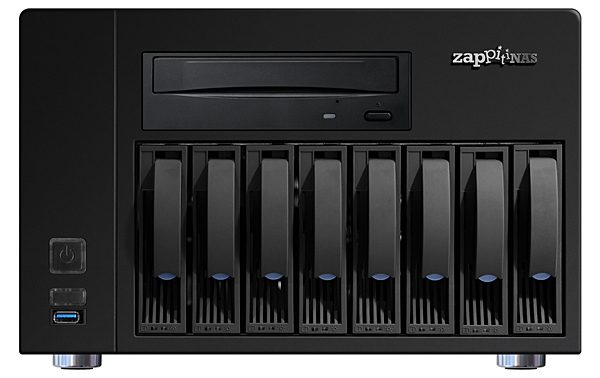
Zappiti's NAS uses the RAID-5 data protection standard to provide fail-safe storage of your collection. With support for up to eight 16TB drives, it can accommodate 1,400 4K/HDR movies uncompressed at full resolution. And since both the NAS and Zappiti players don't require proprietary storage, you can purchase your own drives and load them up. Any player on the network can simultaneously access media from the NAS or the internal drives of any other player. Media stored on external drives attached to a player is only available locally, however.
Setup
The Zappiti system isn't something like a home theater PC that requires a lot of end user know-how. Setup was quite simple using the included manuals (there are also online support videos), which did a nice job of walking me through the settings and playback options. As mentioned above, similar to some of the more popular streaming boxes on the market, all Zappiti players are built upon an Android OS. This presented my only real gripe about the setup process. Because it uses an Android backbone, there are numerous apps and settings unrelated to the Zappiti playback experience. For this reason, users may be confused about what part of the playback system they are changing settings for. There are options, for example, to adjust both the output resolution of the Android menu system and the output resolution of the Zappiti media player software. And although the manuals guide you through this and other setup steps, you may find yourself confused if you typically dive into hardware setup without consulting a manual.



